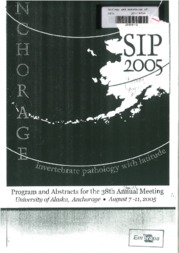Biology and nutrition of resistant and susceptible populations of Anticarsia gemmatalis (Lepidoptera: Noctuidae) to Bacillus thuringiensis.
Biology and nutrition of resistant and susceptible populations of Anticarsia gemmatalis (Lepidoptera: Noctuidae) to Bacillus thuringiensis.
Author(s): MOSCARDI, F.; MALAGUIDO, A. B.; HOFFMANN CAMPO, C. B.
Summary: A colony of Anticarsia gemmatalis was selected in the laboratory for resistance to Bacillus thuringiensis (Bt), through continuous selection pressure by a commercial formulation of Bt (Dipel). This population had a resistance ratio of about 50-fold to Bt, at the time it was compared with the unselected (susceptible) population, regarding biological, nutritional and physiological parameters. Evaluation of larval development and survival, pupal weight and survival, sex ratio, adult reproductive capacity and longevity were based on alI initial number of 80 larvae/treatment. For the evaluation of nutritional and physiological parameters, 40 larvae were used plus 20 larvae used as aliquots for the different determinations for each treatment. The main differences between resistant (RP) and susceptible (SP) populations of A. gemmatalis occurred for some of the biological parameters evaluated. Mean total larval development time was significantly higher in the RP than in the SP larvae. The sexual ratio of emerged adults (female/male) was 1.34 for SP compared to 0.82 for RP. Mean peak oviposition of the SP occurred in the 5th day (ca. 124 eggs/female) after femate emergence, while peak oviposition for the RP occurred in the 6th day (ca. 85 eggs/female) after female emergence. Other biological parameters evaluated were not significantly affected by the treatments. ln general the observed biological differences between the RP and the SP could not be explained by the nutritional and physiological parameters evaluated.
Publication year: 2005
Types of publication: Abstract in annals or event proceedings
Unit: Embrapa Soybean
Keywords: Anticarsia Gemmatalis
Observation
Some of Embrapa's publications are published as ePub files. To read them, use or download one of the following free software options to your computer or mobile device. Android: Google Play Books; IOS: iBooks; Windows and Linux: Calibre.
Access other publications
Access the Agricultural Research Database (BDPA) to consult Embrapa's full library collection and records.
Visit Embrapa Bookstore to purchase books and other publications sold by Embrapa.

